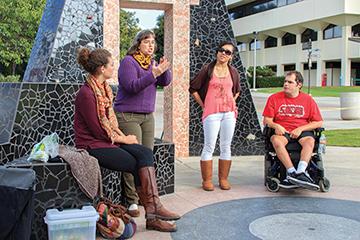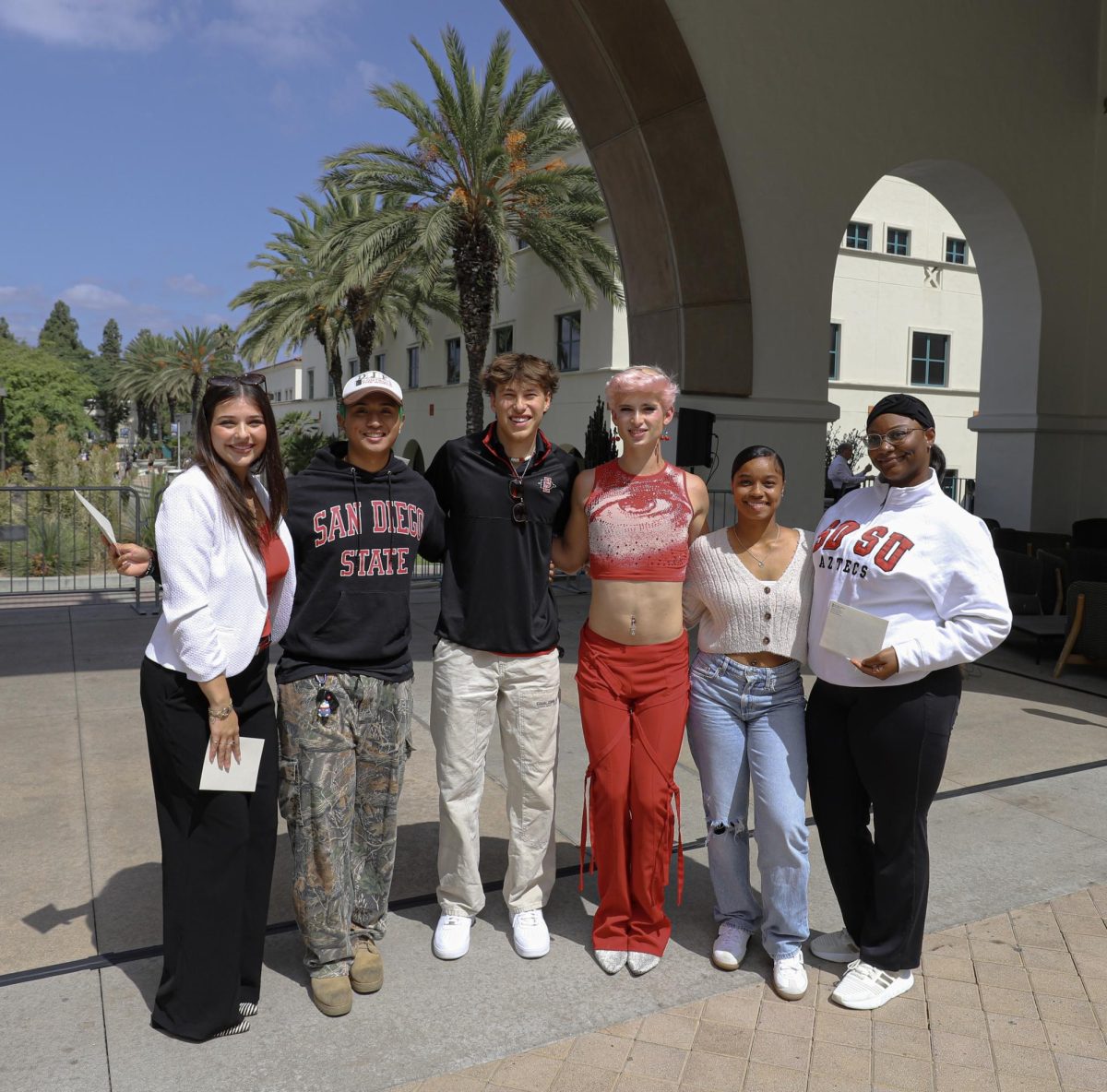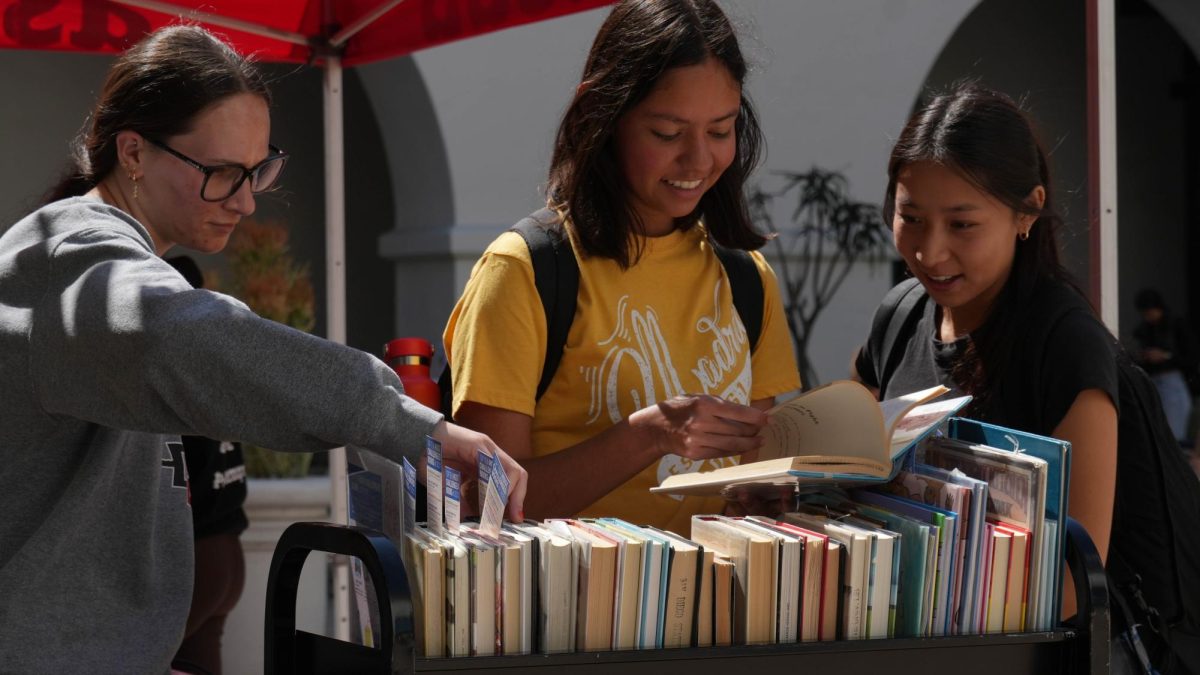Isaiah Moore stands in complete silence surrounded by a group of about 20 students gathered on Campanile walkway. Though no words are spoken aloud, Moore’s agile hands tell his story to his captive audience.
Moore, unlike most of the students around him, is deaf. He has spent most of his life in deaf education, but he is able to communicate to his hearing audience through American Sign Language.
“I used to want to go to SDSU,” Moore signed. “But since they closed the deaf studies program there is no place for me here.”
Within the deaf community the lack of a deaf studies program is seen as an exclusion of the deaf students, Moore said.
Following the closure of the deaf studies program in May of 2010, a group of students took it upon themselves to further awareness of deaf culture and issues, through the building of an ASL Club.
“People forget that ASL is a language just like any other with its own syntax and culture,” ASL club president and senior psychology major Angela Van Ostran said.
The deaf studies program was closed in 2010 because of a combination of budget cutbacks and low enrollment—only 24 students were enrolled in the program at the time of its closure—and may reopen if sufficient interest is shown, SDSU Vice President for Student Affairs Eric Rivera said.
Though SDSU no longer has a deaf studies program, it still provides interpreters to deaf students. However, this does not solve the problem, Van Ostran said. The interpreters are strictly for academic use leaving a social void for deaf students who have trouble communicating with classmates outside of the classroom setting.
The ASL club was specifically set up by club founder Isidore Niyongabo to fill the social void left by the lack of extracurricular communication and involvement that comes with the language barrier.
Van Ostran and her fellow club members have since built the club, which only recently became officially recognized by SDSU, up from only four members to over 30 at the start of the fall semester.
Despite the club’s growing success, members still want to see a return of the deaf studies program or at least increased student access to ASL courses.
Only one ASL course is currently offered at SDSU and is only open to speech language and hearing sciences majors. In response, the ASL club has been offering ASL lessons free of charge for the past two years.
It’s difficult for the students who run the ASL club to maintain a deaf friendly community on their own, SLHS senior Mahie Sumathipala said.
“I think the university sees us as filling the role of a deaf studies program,” Sumathipala said. “As students we just don’t have the same resources.”
Currently the club has been petitioning for the return of a full-fledged deaf studies program.
Photo by Kevin Serrano, staff photographer







